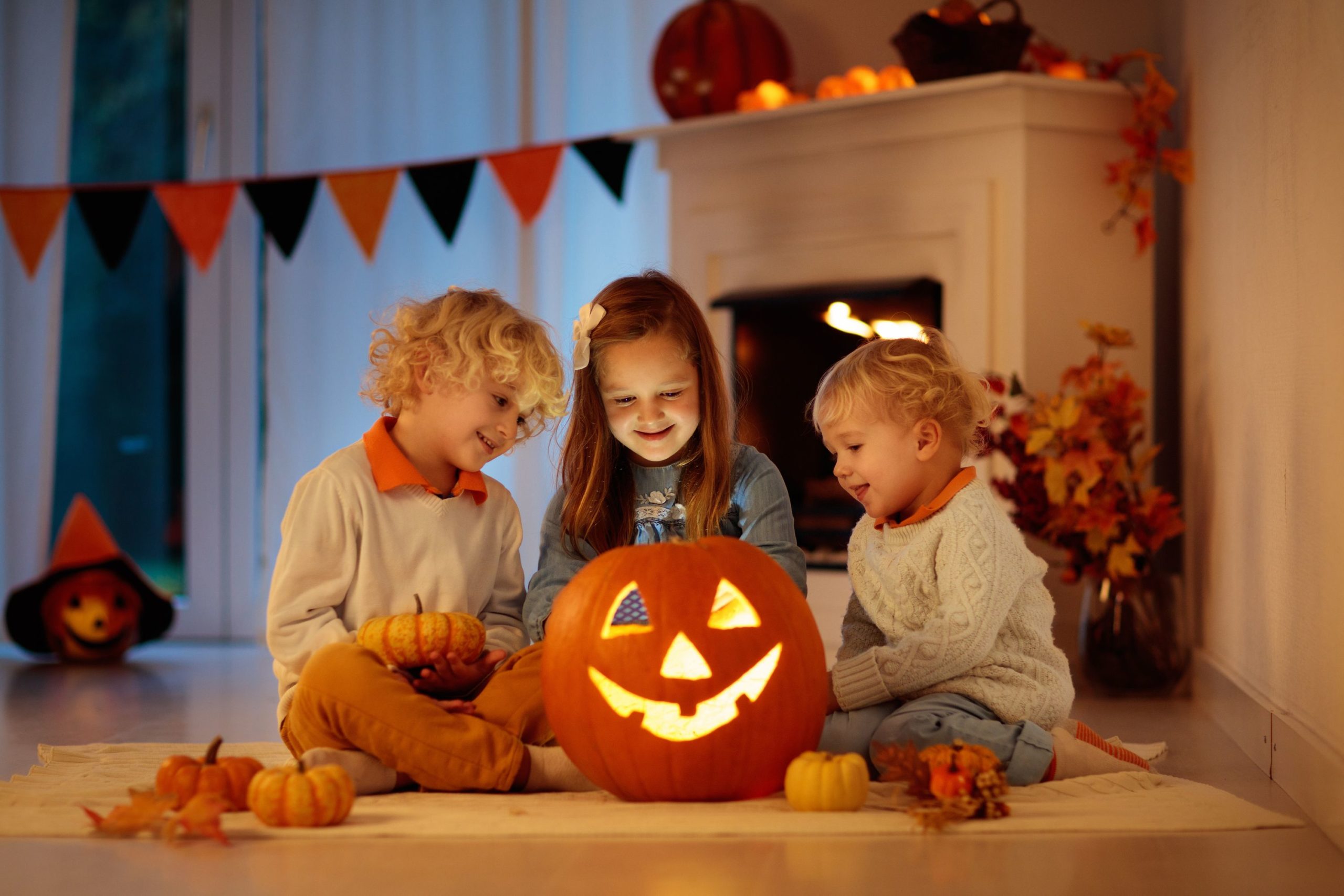
22 Oct Reality, Fantasy & Halloween: A Montessori Approach
Halloween is right around the corner! Although this is a fun-filled season with lots of family activities, it can also prove to be a very confusing time of year for young children.
As parents and educators, we have a responsibility to guide our children and help them participate in Halloween safely and in a reality-based way. So, how do we engage our children in the festive time of Halloween while shielding them from fantasy and keeping them grounded in reality?
Meadow Montessori is here to break it all down the Montessori approach to reality, fantasy, and Halloween? We also invite families throughout the Greater Houston area to get in touch with us to learn more about our Montessori programs.
Reality vs. Fantasy in Montessori Education
Children under the age of 6 naturally struggle to distinguish between what’s real from what’s fictional ‒ and with all of its spooky and scary galore, Halloween only complicates the struggle between reality vs. fantasy even more.
At an older age, children will come to understand the differences between reality vs. fantasy ‒ but until then, what they see and experience in early childhood will affect their personal development.
The Effects of Fantasy on a Child’s Development
Take a young child who believes in ghosts, for example. Their belief could easily hinder their ability to be alone and at ease with themselves. They may constantly be in a hyperaware, fearful state, especially at night when they should be getting a good night’s sleep.
By the time the child is in elementary school, they learn that ghosts aren’t real ‒ but by then, they may have a skittish personality lacking in self-confidence. They may also mistrust adults.
So, what do parents do when concepts like ghosts, ghouls, and other scary figures are ever-present and recurring in our society every October? Next, we’ll explore the role of the Absorbent Mind when it comes to reality, fantasy, and Halloween.
The Role of the Absorbent Mind
From language and mannerisms to family culture and temperament, young children absorb everything around them, both consciously and unconsciously. Their environmental and interpersonal experiences shape who they become later in life. In Montessori education, we call this concept the Absorbent Mind.
As parents, we should be proactive this time of year and stay aware that our children will be exposed to many fictional elements beyond our control. What we can do is point out to them what is real from what is fake and talk to them about what they’re seeing and experiencing.
We can also engage our children in discussions about reality-based fears. Ask your child open-ended questions like:
- What kinds of things scare you?
- Why do you think people are scared of X?
- What can you do when you’re afraid?
- What can you do to help someone else who is afraid?
You can also open up to your child about what scares you and what you do. We encourage leading by example and showing your children that adults, too, experience fear.
Celebrating Halloween: A Montessori Approach
Even though we err on the side of caution this time of year, we also don’t see anything wrong with embracing the Halloween season and allowing our children to partake in the fun.
Here are some science activities and ways your family can approach reality, fantasy, and Halloween in a way that will be beneficial (and educational) for your child.
Literary or Historical Halloween
Here at Meadow Montessori, we host a book character parade every Halloween, where students dress up as characters from their favorite books.
Or, instead of dressing up as fictional characters, Montessori schools often encourage young children to dress up as historical figures or in occupational costumes. Here are some examples:
- Firefighter
- Astronaut
- Doctor
- Veterinarian
If your child decides to dress up as a historical figure, sit down with them and learn about this person. Then, have them share with the rest of the family who this person is/was and what they contributed to the world.
Halloween Slime
With this science activity, you’ll teach your children about how different chemicals react when you mix them together – and have an ooey gooey time in the process!
Supplies You’ll Need:
- 6 oz. bottle of Elmer’s White Glue
- Orange or green food coloring
- ½ teaspoon of baking soda
- 1‒1 ½ tablespoons of contact lens solution that contains boric acid
Pour the 6 oz. bottle of Elmer’s White Glue into a bowl. Stir in the orange or green food coloring with a spoon. Add ½ teaspoon of baking soda to the bowl and mix thoroughly. You can also add up to 2 tablespoons of water for a stretchier slime.
*We recommend an adult complete this next part of the activity!* Add 1 tablespoon of contact lens solution to the bowl. Stir and mix until the slime forms, and then knead with your hands. You can add more contact lens solution if the consistency is too sticky.
Fizzing Pumpkins
This is a seasonal science activity that integrates traditional pumpkin carving with a lesson in the baking soda and vinegar reaction! You’ll definitely want to complete this outside or on a table that’s properly covered.
Supplies You’ll Need:
- Carved pumpkins
- 1 cup of baking soda per pumpkin
- 2-3 cups of vinegar per pumpkin
- Food coloring
After you and your family have carved a jack-o-lantern, add 1 cup of baking soda to the bottom of the pumpkin, followed by drops of food coloring. Then, add 2-3 cups of vinegar into the pumpkin and watch as the reaction unfolds from out of the jack-o-lantern!
Bubbling Ghost
Ghosts don’t have to be scary! With this fun and easy science experiment, you can create bubbly ghosts on Halloween.
Supplies You’ll Need:
- 1 cup of water
- 2 tablespoons of light corn syrup
- 4 tablespoons of dish soap
- White paper cups
- Straws
In a bowl or container, mix 1 cup of water with 2 tablespoons of light corn syrup and 4 tablespoons of dish soap. This will create your DIY bubble solution.
Draw ghost faces on the white paper cups and fill the bottom with the bubble solution. You only need a small amount of the solution at the bottom of each cup. Have your child blow into the straw and watch as they create a bubbly ghost brimming from the top of the cup!
Understanding Reality, Fantasy, & Halloween
Halloween doesn’t have to be a scary or confusing time of year for young children. By taking a Montessori approach to reality, fantasy, and Halloween, we can nurture our children’s development while also encouraging them to have fun!
We wish you all a Happy and Safe Halloween! If you have any questions or would like to learn more about Meadow Montessori, please don’t hesitate to contact us.


Sorry, the comment form is closed at this time.